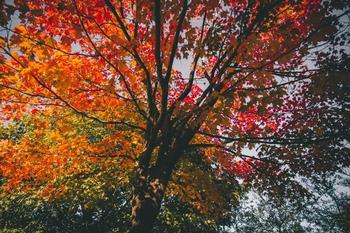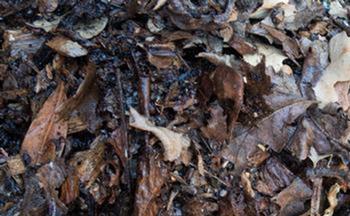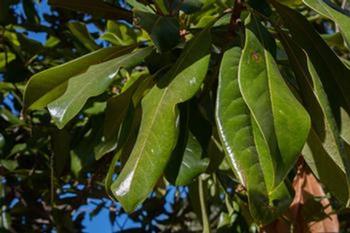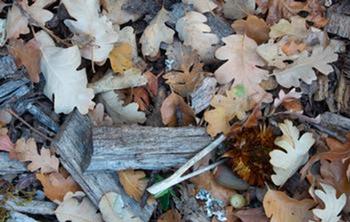What to do with that rake in the fall

Why do autumn leaves fall?
Nature has a reason for falling leaves. When they drop to the ground, they decompose and share their nutrients, which enriches the soil with fungi and bacteria and provides mulch at the base of the plant. As mulch, fallen leaves help protect the plant from winter’s assault by spreading an organic blanket on the surface of the soil. They help prevent the drying and freezing of root tissue. They suppress weed growth and provide a habitat for insects, larvae, and other animals seeking shelter, food, and a place to nest. When rainstorms come, leaves help with erosion control.
This nutritious blanket can be a conundrum for gardeners because leaf litter can also be a liability. Fallen leaves are dry and combustible, subject to fire and smolder from a spark. We all are working to create defensible space in our landscape to protect our homes from wildfire. The effort to clear the combustible material can include the removal of this valuable nutritive blanket.

Leaf composting turns leaves into gold
You can leverage the nutritive value of your dead leaves through leaf composting. This doesn’t require a separate composter or fancy system. Rather, piling the leaves on the ground in an area of your yard at least 30 feet from your home and away from other vegetation allows them to break down without being a fire hazard. If the thought of raking leaves away from your home for safety is more than you can bear, consider using an electric reverse blower. This leaf vacuum has a bag attached so you can collect your leaves with little effort.
Decomposition happens: here’s how
Understanding the basics of decomposition can help you keep your compost pile growing and ready for use around the base of your plants. The objective of composting is to balance nitrogen and carbon into a nutritious plant food and soil enhancer. This can be achieved by combining the carbon in your dried leaves with material high in nitrogen. These “green” materials can include chicken manure, coffee grounds, grass clippings, and raw vegetable scraps. For best results, use a ratio of four parts leaves to one part green material. Avoid adding meat, dairy products, or cooked food – it can attract critters. And don’t add dog or cat poop – your pile might become a source of dangerous bacteria.
The decomposition process requires moisture and oxygen. The pile of compost should be turned and mixed to aerate it. Moisture can be provided by rain or hand sprinkling. If the pile becomes slimy or smelly, add more leaves. Learn more about composting.

The type of leaf added to the pile can affect the quality of the compost. Hard, waxy leaves like magnolia and live oak leaves break down slowly and benefit from shredding or weed whacking. If you’re using oak leaves, you may want to limit their quantity to 20 percent of the mix due to their acidic nature.
Leaves for lawns
A light covering of leaves on the surface of the lawn can simply be shredded with your lawn mower and left in place. They will decompose rapidly and add valuable nitrogen and organic matter to the soil. Once the leaf layer becomes too thick, you must begin raking them up for your compost pile.
When to leave the rake in the shed

Stay fire-smart
Be sure to remove fallen leaves and other debris within five feet of your home and other structures or decks. If you can accommodate a compost pile in an extended reduced-fuel area, you can still use the valuable leaves in your garden. Learn more about fire-smart landscaping.
